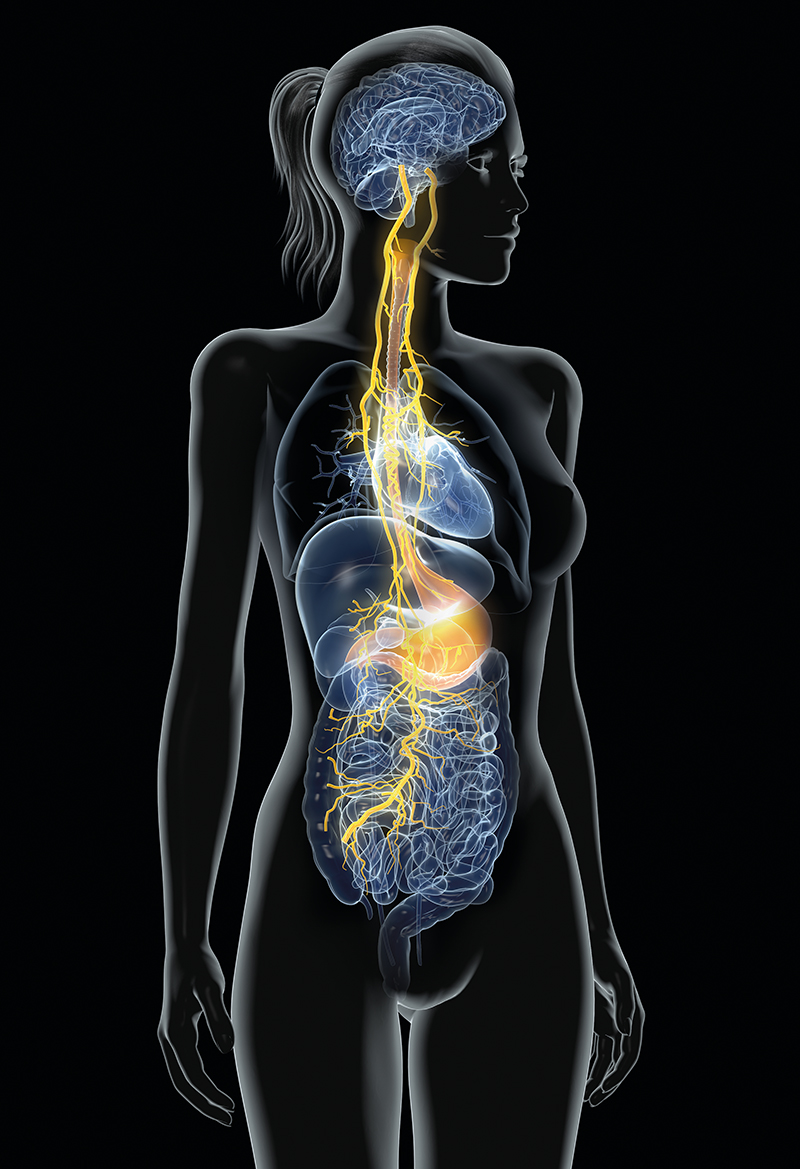Polyvagal Theory and Trauma
The Autonomic Nervous System

The autonomic nervous system is a control system that acts largely unconsciously and regulates bodily functions, such as the heart rate, digestion, respiratory rate, pupillary response, urination, and sexual arousal. This system is also in charge of the bodys’ defence systems that function to facilitate survival.
Polyvagal Theory offers a scientific understanding of how the sub-divisions of the autonomic nervous systems function, each with their own defense system working in their own way to preserve life. In 1994 Dr Stephen Porges proposed the Polyvagal Theory, a theory that links the evolution of the mammalian autonomic nervous system to social behaviour and emphasizes the importance of physiological state in the expression of behavioural problems and psychiatric disorders.
Porges coined the term “neuroception” to refer to our innate unconscious awareness through the autonomic nervous system to influences in the body, in the environment, and in interactions between people. Our body picks up signals through the senses and the “felt sense” that detect danger and relay the information to the brain. This means we detect indicators of danger or safety before we have time to think about it consciously. Elements of past experiences are stored in the nervous system and when the body detects similar elements currently it determines if the situation brings safety or danger and responds accordingly.
According to the Polyvagal Theory the autonomic nervous system has three subdivisions that are responsible for regulation of our autonomic responses. The oldest of these subdivisions is the dorsal vagus which relates to the dorsal (back) part of the vagus nerve. The function of this part of the vagus nerve is to immobilise. The dorsal vagus nerve winds its way down through the organs into the gut. This system brings a shut down, or “freeze” when a situation of danger feels uncontrollable and overwhelming. The dorsal vagus is also responsible for a less extreme response, more of just an unwinding response and this allows for the rest and digest of the system, resulting in recuperation and regeneration.
The ventral vagus is the front part of the vagus nerve which is also part of the parasympathetic nervous system. It extends to all parts of the face, ears, eyes, throat, chest, including the heart and the lungs. It is the most evolved and complex of the subdivisions, and is responsible for communication and social engagement. This complex network of fibres dictates our heart rate, breathing, hearing, facial muscles and vocalizing. When we see kindness out there, our body relaxes. When we hear harsh tones, our body stiffens. The ventral vagal system is also called the social engagement system. Communicating and connecting is our first line of defence.
The sympathetic nervous system is the third part of the autonomic nervous system. It is responsible for mobilising the body to take action. This may be just the “get up and go” energy to attend to daily life tasks, but in times of danger it is also responsible for the fight/ flight response that allow us to take action.
According to Polyvagal Theory all three of these subdivisions follow a natural hierarchical order depending on the neuroception of safety or danger in the situation. If the environment is detected as safe, we are free to use the ventral vagal social engagement system, which means we are relatively free be ourselves, express our own feelings, use facial expression easily, and use a modulated voice pattern. Also, our heart rate is relatively calm, we breathe freely, and we filter out human language from background noise. However if the environment is not detected as being safe, the body secretes stress hormones such as adrenaline and cortisol and prepares to defend by taking action, either to fight or to flee. If the level of threat and the circumstances is such that no action can be taken, then a point of overwhelm is reached, a disconnection occurs and the body prepares for shut down. The freeze response. This also shuts down the capacity to act and interact. Unresolved freeze responses may last a lifetime and leave an individual unable to mobilise to take action when it is needed. It is important to note that all these responses are not under voluntary control. The nervous system is making these decisions at a subconscious level based on the experience of safety.
Trauma and the Polyvagal Theory
When traumatised, the system is reacting not simply to the immediate safety or danger in their environment, but also to an interaction internally between the immediate environment and a sense of triggering activity based on past life events. If someone experienced an event in childhood in which they did not feel safe, a similar event in their present adult life might echo such an experience internally, and result in triggering this person into the more primitive neural systems of needing to fight, flee, or shut down in order to survive.
All of us have experienced events in our life that are traumatic. Some of those might be big traumas and some of those might be small. Elements of traumatic events are stored in the nervous system and the brain is constantly working to assess a situation for danger based on these experiences of the past. This happens subconsciously; before we have time to think. Thus our responses are often set in motion before we actually consciously decide to do so. This is why even though we conscious tell ourselves one thing, we often find ourselves doing another. This is also why it is important to deal with our past experiences. Otherwise they keep influencing our current experience




